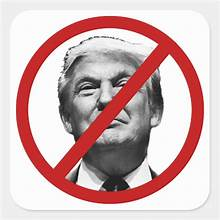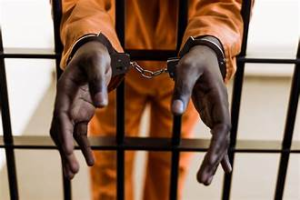This is the fifth article of a 7-part series that will focus on the issues in our radical movements that I think need our immediate and ongoing attention. I am using the ancient eastern concept of chakras for the body as a parallel to our movement’s energy wheel. Healers believe sickness occurs when the body’s chakras are blocked or out of alignment. Likewise, the U.S. Left and our social justice movements need our collective introspection, analysis and adjustments that lead to unblocking our energy/chi points. A weakened Left, and especially the Black Left, have been unable to provide this critical guidance over the last twenty years. I do not have the space to go too deep into my thinking although I have been pondering and talking about this very subject for a few years now. I am looking to stimulate a higher level of principled discussion about how to energize and organize the social forces coming into play at this pivotal juncture in history and how we can rebuild a formidable radical movement in this country.
“Emancipate yourselves from mental slavery
None but ourselves can free our minds.”
-Redemption Song, Bob Marley
 Our social movement can be schizophrenic about how we treat one another. While we can be a loving, caring bunch of folks, we can also be mean-spirited and self-serving. Whether you call yourself a progressive or a revolutionary, movement forces don’t always live up to our lofty principles. This article will focus on how our movement deals with disruptive, inhumane and criminal behaviors amongst us. It’s time to discover the chakra of redemption as a more humane way of dealing with contradictions. The pre-requisites to redemption are accountability and humility.
Our social movement can be schizophrenic about how we treat one another. While we can be a loving, caring bunch of folks, we can also be mean-spirited and self-serving. Whether you call yourself a progressive or a revolutionary, movement forces don’t always live up to our lofty principles. This article will focus on how our movement deals with disruptive, inhumane and criminal behaviors amongst us. It’s time to discover the chakra of redemption as a more humane way of dealing with contradictions. The pre-requisites to redemption are accountability and humility.
Our organizations and social movement have at least two issues going on in the arena of negative behaviors. One is how we deal with self-criticism and criticism, and recognize the importance of integrating the practice in our work styles in a healthy, non-punitive way. The other is the need for an established recourse for when one of our own has done mental, physical, social and financial harm to a person or to an organization in our movement. These two realms are inextricably connected and our movement has dealt with both in a half-hearted, superficial way.
Our movement can’t seem to engage in healthy, principled debates nor do people feel open to expressing legitimate disagreements. We have developed some crafty tactics to shift or shut down debate. If a heterosexual disagrees with a non-cis person, s/he is labeled homophobic. If a white ally raises a critique, they are dismissed as racist. If a male has a different assessment than a female, his patriarchy is called into question. If a Jewish person is presented with a valid criticism, it must be rooted in anti-Semitism. If an elder shares an opposing viewpoint with a younger person, a charge of respectability politics is hurled back. The goal for engaging in political or ideological discussion is to reach a higher level of unity and clarity. If this process is discouraged, stifled or rebuked, our movement will operate on a shaky unity and a guaranteed confusion about our strategic goals. Unity-struggle-unity means one comes to the circle seeking unity (not a fight); this allows for a genuine struggle of ideas or tactics that should lead to improved relationships and a deeper unity about moving forward.
Social media is often misused as a forum to raise criticisms about people or groups. Facebook is the last place you should come to resolve a problem or misunderstanding because then it’s clear that you aren’t interested in resolution, you want to engage in character assassination. We know from history that these kinds of infantile political tantrums only serve our enemies (police, FBI). Veteran human rights activist Harry Belafonte brought this warning to young protesters when he came to Ferguson; he had been informed of their vicious barbs being exchanged over the internet.
Unsubstantiated political and personal attacks, sabotage of work, bullying, malicious gossip, destruction of property, adultery, embezzlement, theft, domestic violence, assault, rape, child molestation, etc. There’s a range of contradictions flourishing within our ranks from political misdeeds to acts considered criminal under U.S. law. I’ve been in numerous organizations over my adult life. I’ve witnessed their devastating effect on individuals and their families as well as the organizations involved. Crimes against persons in our movement frequently go unpunished because we don’t want to turn perpetrators over to the state for its special brand of just-us. Yet, we’ve developed no alternative process or internal mechanism to hold people accountable, to challenge their behavior and to ultimately change that behavior.
Before you think I’m talking about bustin’ knee caps with a baseball bat or throwing people in the river with a cement block tied around their neck, I suggest we turn to Chairman Mao. The two approaches below have helped me over the years to stay grounded when dealing with movement conflict. In 1942 Mao saw how people in China were confusing the two and we can certainly see it in 2017.
Mao said, “In treating an ideological or a political malady, one must never be rough and rash but must adopt the approach of “curing the sickness to save the patient”, which is the only correct and effective method.”
On the contradictions among the people, Mao advised us that there are contradictions “between ourselves and the enemy and those among the people…the two are totally different in nature.” The inescapable vapors of capitalist ideology affect the entire society. Those of us doing the hard work of transformation must have an accurate understanding of how these capitalist toxins affect us and our organizing. Our organizations can be proactive in saving the patient if first we have created trusting and supportive environments and if the patient wants to be saved.
The way the movement people deal with one another cannot be the same way in which we deal with enemy forces. In too many instances, our response is even harsher towards each other than we are towards the enemy. We need to call this behavior out whenever it happens because it is dangerous. But it can’t stop there. The patient must understand the harm s/he has done, own it and submit her/himself to a collective process of accountability and healing. This takes both humility and trust of the process. The collective must be loving but firm in supporting the purge of negative behavior before we jump to purge the individual. There were plenty of purges during the Black Power Movement and the New Communist Movement but such extreme acts seldom resulted in a more healthy and democratic organization. Instead it produced fear, resentment, paranoia and the departure of many committed freedom fighters.
I publicly raised the issue of redemption in my article titled “#Cutthecheck is not a Movement” and again when I responded to a distressing Facebook post by a Ferguson activist who revealed personal pain caused by other activists. Both of my responses generated interest for the need to build into our movement structure the mechanisms to hold people accountable. Our movement leaves many victims in its wake; they must be made whole too.
As Bob Marley sings, we must emancipate ourselves from mental slavery. That’s going to take real effort by the individual and the collective. While we are creating paths of redemption, we will also have to establish ways of dealing with incorrigibles who continue to wreak havoc in our political spaces despite our most determined efforts. If there are groups who have working models for dealing with internal conflict, I would encourage them to share widely so that people don’t have to re-invent the wheel.
What would redemption look like in our movement? I think that the emphasis should be put on justice and restoring people and organizations to a place of wholeness. The starting place should be understanding that we all have been socialized under capitalism. Some people’s lives have been more traumatic that others. That means we act up and act out. Our movement must be proof that we are capable of change or else we can’t expect the masses of people to be believe that real transformation is possible. Our organizations should engage in consistent and just approaches to root out hegemonic behaviors whenever they rear their ugly heads. Just remember, the patient is our campanero in struggle not the enemy.
When the redemption chakra is unfettered, I think we will experience people in our movement truly striving for to exceed their human potential. We will support one other so that we become our best selves for the movement and new society we are creating. This will lead to an invincible movement that is as compassionate to our people as it is merciless to our enemies.
Next article: Unblocking the chakra of summation.



